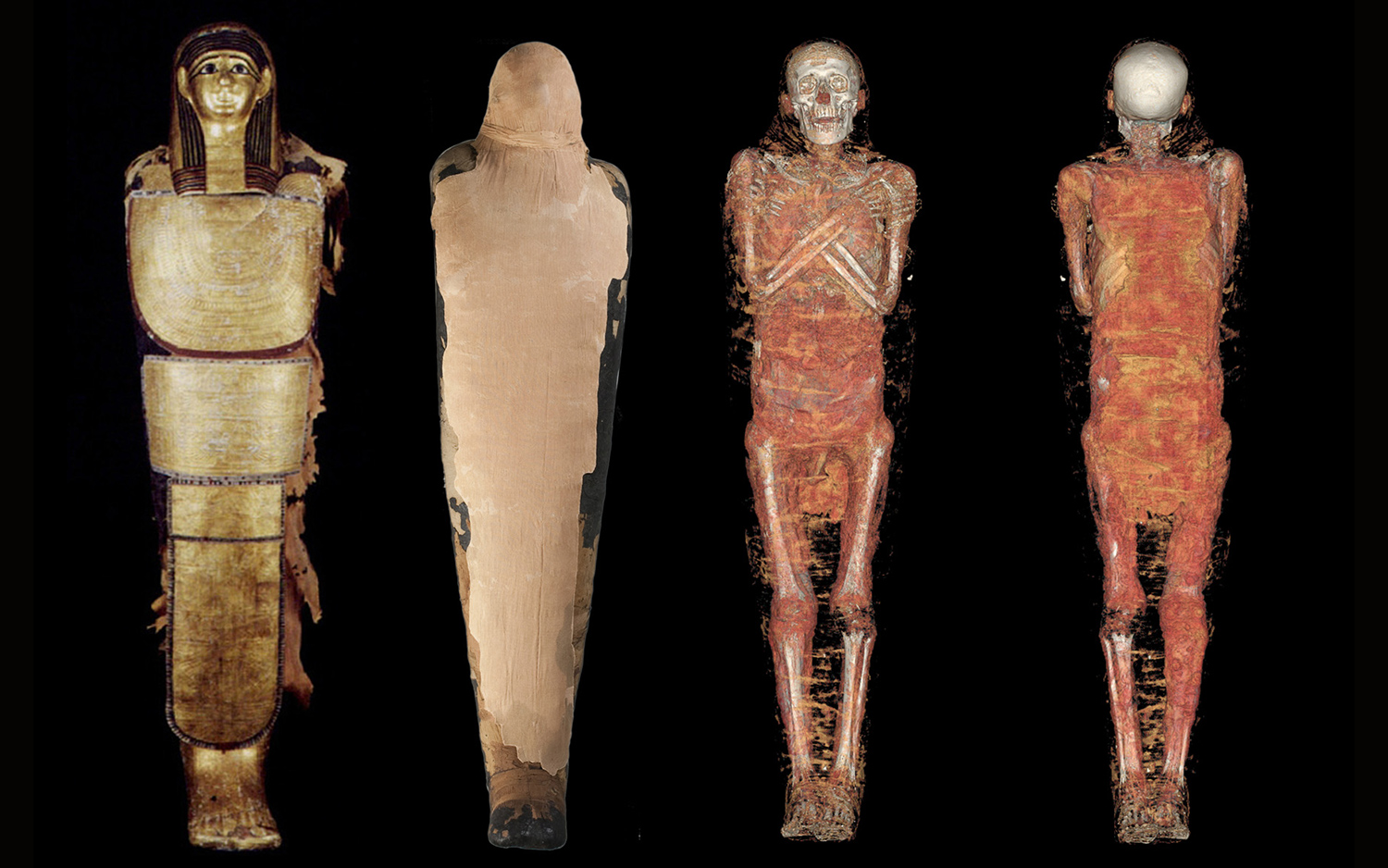Mystery Mummy May Have Been Pharaoh's Personal Eye Doctor

Among the ancient Egyptian pharaohs, queens and religious elites who elected to be immortalized through mummification, there was also at least one ophthalmologist.
Meet Nespamedu, a 2,200-year-old eye doctor made quite the spectacle of himself in the afterlife, according to some new research shared by the National Archaeological Museum (MAN) in Madrid, Spain. According to a series of recent papers published in the museum's in-house journal, the lavishly decorated mummy was once a priest and doctor thought to minister to none other than the pharaoh Ptolemy II (and possibly his successor Ptolemy III). The doc is thought to have lived sometime between 300 B.C. and 200 B.C.
Bedecked in five intricately inscribed gold plates and crowned with a painted-on face and wig, Nespamedu's mummified remains were initially thought to be a woman's when the museum first received them from a donor in 1925. Inscriptions on the mummy's golden encasement revealed him to be a priest named Nespamedu from Saqqara, Egypt, but little else could be discerned about who the bandage-wrapped man had been. [Photos: Mummies Discovered Entombed in Ancient Egyptian City]
In 2016, museum officials put some of their questions to rest when they sent the mummy (along with three other corpses from their collection) to receive computed tomography (CT) scans at the Quirónsalud Madrid University Hospital. After taking nearly 3,000 images of the mummy, the researchers discovered that Nespamedu had died at about 55 years of age — but not before achieving the immense social status that would have allowed for a lavish afterlife.
Under the mummy's golden sheath and bandages, researchers found several dozen religious charms and plaques depicting various spiritual scenes. Several of these plaques showed images of the God Thoth (the ibis-faced deity of science and medicine, among other things), who healed fellow deity Horus' eye after a nasty God fight. Museum researchers hypothesized that the images on these plaques were evidence that Nespamedu may have been the pharaoh's personal eye doctor.
"There is nothing casual about the iconography and it is clear that he wanted to register his beliefs and the responsibilities that had elevated him to the upper echelons of society," museum researchers wrote in their latest report on the mummy (translated into English by the Spanish news site El Pais). "The fact that he was the pharaoh's doctor makes us think that part of his life was lived in Alexandria, where Ptolemy II had his court."
The researchers concluded that, by the end of his life, the good doctor had become one of Egypt's elite, hobnobbing with pharaohs and artisan mummifiers who knew their way around a sheet of gold leaf. Little is known of Nespamedu's grandmother, but one can imagine she would have been very, very proud.
Get the world’s most fascinating discoveries delivered straight to your inbox.
Originally published on Live Science.
25 Grisly Archaeological Discoveries

Brandon is the space / physics editor at Live Science. With more than 20 years of editorial experience, his writing has appeared in The Washington Post, Reader's Digest, CBS.com, the Richard Dawkins Foundation website and other outlets. He holds a bachelor's degree in creative writing from the University of Arizona, with minors in journalism and media arts. His interests include black holes, asteroids and comets, and the search for extraterrestrial life.


